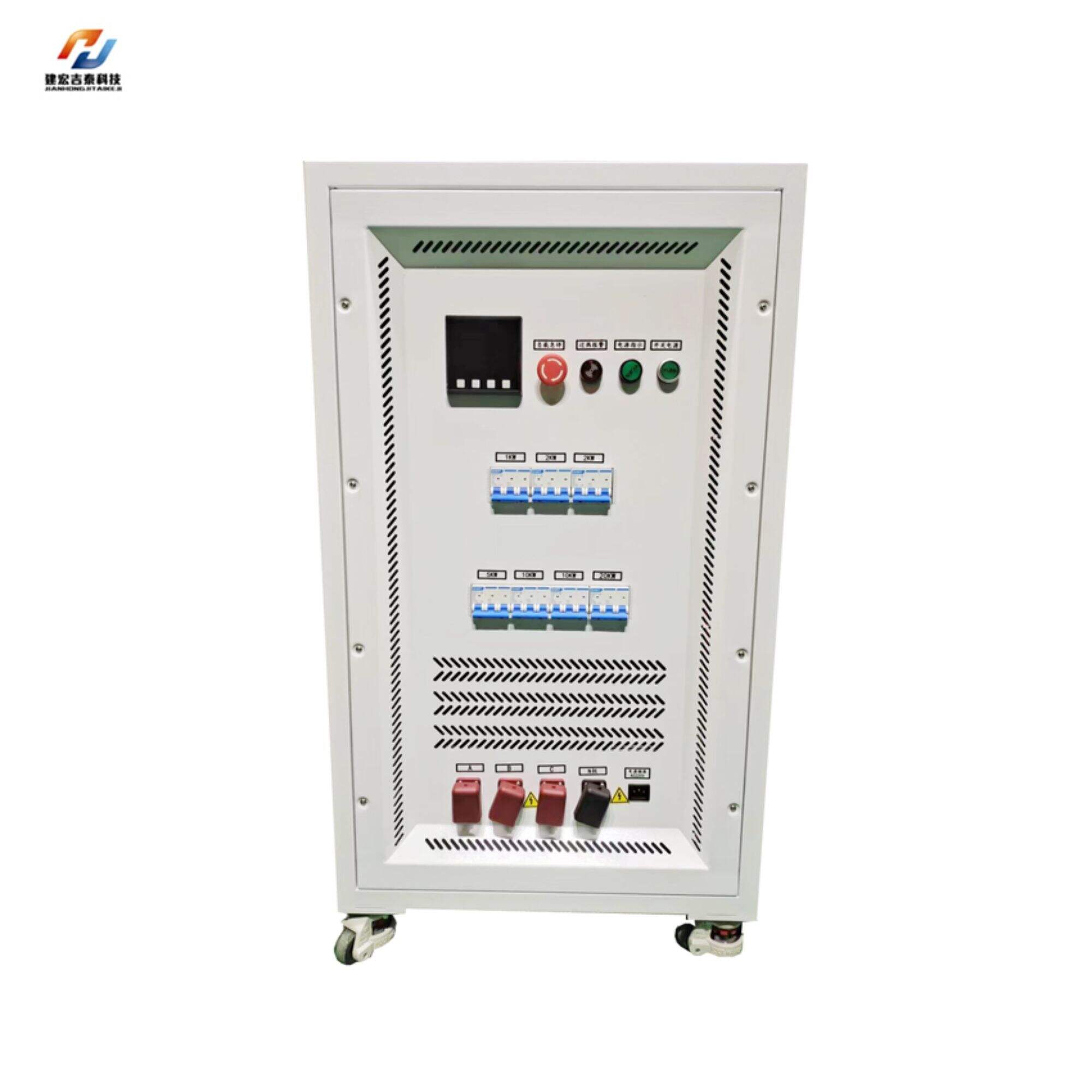Performance Features of 5KW AC Load Banks
Performance Features of 5KW AC Load Banks
In an era where reliable power sources are critical for industrial and commercial operations, 5KW AC load banks stand out as essential devices for testing the integrity and performance of backup systems, especially generators.
Understanding 5KW AC Load Banks
What is a Load Bank?
A load bank is an electrical device that simulates a load on a power source to test its performance. It safely dissipates power in the form of heat, primarily using resistive elements. Load banks are vital tools in ensuring that generators function effectively under various operational conditions. They mimic the expected electrical load that a power source will see during regular use.
Types of Load Banks
Load banks can be categorized mainly into resistive, reactive, and resistive-reactive types:
- Resistive Load Banks: These consume the complete real power load, aiding in thorough testing of fuel, exhaust, and cooling systems.
- Reactive Load Banks: These might be needed for testing under non-unity power factor loads, often utilized in configurations providing both capacitive and inductive loads.
- Resistive-Reactive Load Banks: Combining both resistive and reactive characteristics, these banks serve applications that require a more comprehensive testing scope, such as data centers or industrial setups.
Importance of Load Banks in Power Systems
Load banks are indispensable for enhancing reliability and performance in electrical systems. They help:
- Prevent wet stacking in generators, which occurs when engines run on low loads for extended periods.
- Ensure that backup systems can provide optimal performance during power outages, which is paramount in critical operations like hospitals and data centers.
Performance Features of 5KW Load Banks
Resistive Load Testing
The primary feature of the 5KW load bank is its ability to provide resistive load testing. By applying a full load, it allows testers to assess the generator's capabilities thoroughly. This test encompasses the entire fuel and exhaust system's efficiency and confirms that everything is operating as it should.
Reactive Load Testing
In addition to resistive testing, 5KW load banks can conduct reactive load testing. This feature is crucial for applications where the power factor needs evaluation under non-ideal conditions. For instance, reactive testing is essential for generators equipped with inductive loads, such as motors.
Monitoring and Control Features
Modern 5KW load banks are equipped with advanced monitoring and control features, allowing for real-time data analysis during testing. These features often include:
- Digital displays that show real-time readings of volts, amps, frequency, and power factor.
- Remote control capabilities that facilitate operations without needing to be physically present, making it convenient and safer for operators.
Design and Construction of 5KW Load Banks
Materials Used
The construction of 5KW load banks typically involves high-quality materials designed to withstand extreme conditions. Common materials include robust aluminum and steel that allow for durability and resistance to corrosion and environmental stresses.
Cooling Systems
To manage the heat generated during load testing, a reliable cooling system is essential. Most designs employ:
- Air-cooling mechanisms that utilize fans to dissipate heat efficiently.
- Water-cooling systems in more advanced models, which can offer even better thermal management.
Safety and Compliance Standards
Load banks must meet specific safety and compliance standards to ensure their reliable operation. Exhaustive testing, adherence to national electrical codes, and proper design certifications protect both the equipment and its operators from potential hazards.
Applications of 5KW AC Load Banks
Industrial Applications
In industries, 5KW AC load banks are utilized for routine generator testing, ensuring that backup systems perform optimally during production processes and emergency scenarios.
Commercial Uses
These load banks are crucial in commercial settings like retail centers, where downtime can lead to significant losses. They provide assurance that power systems can support operational loads effectively.
Load Bank Testing for Generators
One of the most common applications is performing load bank testing for generators during commissioning and periodic maintenance. This testing ensures that generators can handle the maximum load they are rated for, effectively preparing them for unforeseen power failures.
Conclusion
5KW AC load banks are invaluable assets in ensuring the reliability and efficiency of power systems across various settings. With their resistive and reactive load testing capabilities, comprehensive monitoring features, robust construction, and extensive applications, they play a pivotal role in maintaining the operational integrity of generators and power sources. Whether you are a facility manager, engineer, or technician, understanding these devices can greatly enhance your approach to power management.
As businesses and industries increasingly rely on backup power, investing in quality load banks is not just a choice but a necessity for peace of mind and operational continuity.

Recommended Products
Hot News
-
What Are The Functions Of The Ac Load Box For Power Supply Detection And Maintenance
2024-01-11
-
The Use Characteristics And Methods Of The Load Bank Of The Generator Set
2024-01-11
-
The function of the load bank
2024-01-09
-
Explore The Types And Characteristics Of Resistors: Fixed And Variable Resistors
2024-01-09
-
How Resistors Work And Their Applications In Circuits
2024-01-09
-
Load Banks: Ensuring Optimal Performance in Power Testing Environments
2024-10-21
-
Exploring the Advantages of Wirewound Resistors for Precision Applications
2024-10-14
-
Understanding the Benefits of Aluminum Resistors in High-Performance Applications
2024-10-08

 EN
EN
 AR
AR
 BG
BG
 HR
HR
 CS
CS
 DA
DA
 NL
NL
 FI
FI
 FR
FR
 DE
DE
 EL
EL
 IT
IT
 JA
JA
 KO
KO
 NO
NO
 PL
PL
 PT
PT
 RO
RO
 RU
RU
 ES
ES
 SV
SV
 TL
TL
 ID
ID
 LT
LT
 SR
SR
 SK
SK
 UK
UK
 VI
VI
 HU
HU
 TH
TH
 TR
TR
 AF
AF
 MS
MS
 GA
GA
 BN
BN
 LO
LO
 LA
LA
 NE
NE
 MY
MY
 UZ
UZ













